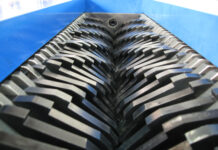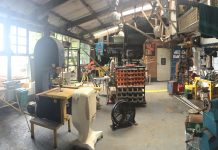Identifying the Immediate ROI in the Industrial IoT
Manufacturers seek quantifiable ROI before making leap to IIoT implementation
By now, most manufacturers have heard of the promise of the Industrial Internet of Things (IIoT).
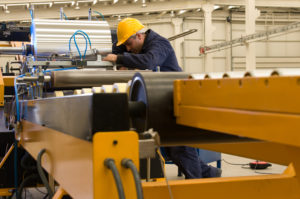
In this bold new future of manufacturing, newly installed sensors will collect previously unavailable data on equipment, parts, inventory and even personnel that will then be shared with existing systems in an interconnected “smart” system where machines learn from other machines and executives can analyze reports based on the accumulated data.
By doing so, manufacturers can stamp out inefficiencies, eliminate bottlenecks and ultimately streamline operations to become more competitive and profitable.
However, despite the tremendous potential, there is a palpable hesitation by some in the industry to jump into the deep end of the IIoT pool.
When asked, this hesitation stems from one primary concern: If we invest in IIoT, what specific ROI can we expect and when? How will it streamline my process such that it translates into greater efficiencies and actual revenue in the short and long term?
Although it may come as a surprise, the potential return can actually be identified and quantified prior to any implementation. Furthermore, implementations can be scalable for those that want to start with “baby steps.”
In many cases, this is being facilitated by a new breed of managed service providers dedicated to IIoT that have the expertise to conduct in-plant evaluations that pinpoint a specific, achievable ROI.
These managed service providers can then implement and manage all aspects from end-to-end so manufacturers can focus on core competencies and not becoming IIoT experts. Like their IT counterparts, this can often be done on a monthly fee schedule that minimizes, or eliminates, up-front capital investment costs.
Defining IIoT
Despite all the fanfare for the Internet of Things, the truth is many manufacturers still have a less-than-complete understanding of what it is and how it applies to industry.
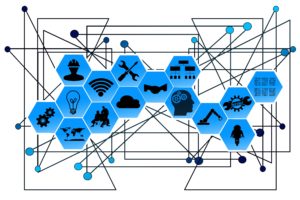 While it might appear complicated from the outside looking in, IIoT is merely a logical extension of the increasing automation and connectivity that has been a part of the plant environment for decades.
While it might appear complicated from the outside looking in, IIoT is merely a logical extension of the increasing automation and connectivity that has been a part of the plant environment for decades.
In fact, in some ways many of the component parts and pieces required already exist in a plant or are collected by more manual methods.
However, a core principle of the Industrial “Internet of Things” is to vastly supplement and improve upon the data collected through the integration of sensors in items such as products, equipment, and containers that are integral parts of the process.
In many cases, these sensors provide a tremendous wealth of critical information required to increase efficiency and streamline operations.
Armed with this new information, IIoT then seeks to facilitate machine-to-machine intelligence and interaction so that the system can learn to become more efficient based on the available data points and traffic patterns. In this way, the proverbial “left hand” now knows what the “right hand” is doing.
In addition, the mass of data collected can then be turned into reports that can be analyzed by top executives and operations personnel to provide further insights on ways to increase operational savings and revenue opportunities.
In manufacturing, the net result can impact quality control, predictive maintenance, supply chain traceability and efficiency, sustainable and green practices and even customer service.
Bringing it all together
The difficulty, however, comes from bridging the gap between “here” and “there.” Organizations need to do more than just collect data; it must be turned into 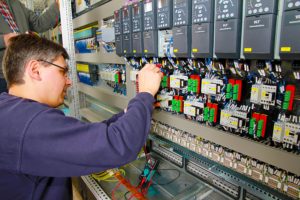 actionable insights that increase productivity, generate savings, or uncover new income streams.For Pacesetter, a national processor and distributor of flat rolled steel that operates processing facilities in Atlanta, Chicago and Houston, IIoT holds great promise.
actionable insights that increase productivity, generate savings, or uncover new income streams.For Pacesetter, a national processor and distributor of flat rolled steel that operates processing facilities in Atlanta, Chicago and Houston, IIoT holds great promise.
“At Pacesetter, there are so many ways we can use sensors to streamline our operation, says CEO Aviva Leebow Wolmer. “I believe we need to be constantly investigating new technologies and figuring out how to integrate them into our business.”
Pacesetter has always been a trendsetter in the industry. Despite offering a commodity product, the company often takes an active role in helping its customers identify ways to streamline operations as well.
The company is currently working with Industrial Intelligence, a managed service provider that offers full, turnkey end-to-end installed IIoT solutions, to install sensors in each of its facilities to increase efficiency by using dashboards that allow management to view information in real time.
“Having access to real-time data from the sensors and being able to log in and see it to figure out the answer to a problem or question so you can make a better decision – that type of access is incredible,” says Leebow Wolmer.
She also appreciates the perspective that an outsider can bring to the table.
“Industrial Intelligence is in so many different manufacturing plants in a given year and they see different things,” explains Leebow Wolmer. “They see what works, what doesn’t, and can provide a better overall solution not just from the IIoT perspective but even best practices.”
For Pacesetter, the move to IIoT has already yielded significant returns.
In a recently completed project, Industrial Intelligence installed sensors designed to track production schedules throughout the plant. The information revealed two bottlenecks: one in which coils were not immediately ready for processing – slowing production – and another where the skids on which they are placed for shipping were often not ready.
By making the status of both coil and skids available for real time monitoring and alerting key personnel when production slowed, Pacesetter was able to push the production schedule through the existing ERP system.
This increased productivity at the Atlanta plant by 30%. Similar implementations in the other two facilities yielded similar increases in productivity.
Taking the First Step
According to Darren Tessitore, COO of Industrial Intelligence, the process of examining the possible ROI begins with a factory walk-through with trained expertise in manufacturing process improvement and IoT engineers that understand the back-end technologies.
A detailed analysis is then prepared, outlining the scope of the recommended IIoT implementation, exact areas and opportunities for improvement and the location of new sensors.
“The analysis gives us the ability to build the ROI,” says Tessitore. “We’re going to know exactly how much money this will make by making the changes. This takes much of the risk out of it so executives are not guessing how it might help.”
Once completed, a company like Industrial Intelligence can then provide a turnkey, end-to-end-solution.
According to Tessitore, this covers the entire gamut: all hardware and software, station monitors, etc.; the building of real-time alerts, reports & analytics; training management on how to use data points to increase profits; and even continuously monitoring and improving the system as needed.
“Unless you’re a huge company, you really don’t have somebody who can come in and guide you and create a cost effective solution to help you compete with the larger players in the space,” says Pacesetter’s Leebow Wolmer. “I think that’s what Industrial Intelligence offers that can’t be created on your own.”
“It’s not a one-size-fits-all approach,” she adds. “They have some things that can give you a little bit of IIoT or they can take an entire factory to a whole new level. By doing this they can be cost effective for a variety of sizes of organizations.”
For more information, contact Industrial Intelligence at www.industrialintelligence.net










